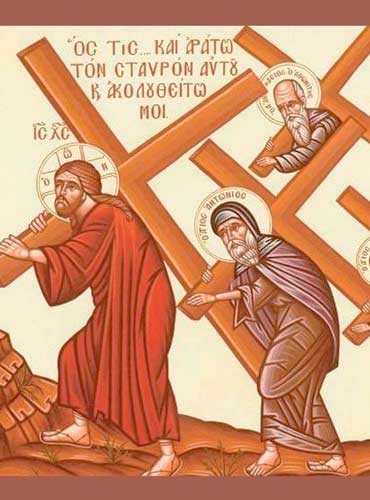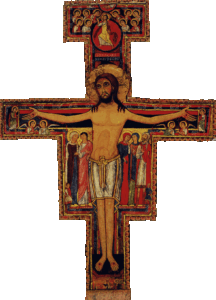Friday of the Sixth Week of Ordinary Time – Mk 8:34-9:1
In yesterday’s Gospel, we heard Peter’s confession of faith, and then how Christ made the first announcement of His passion, which provoked a rebuke from Peter. We could say that it’s not enough simply to know who Christ is; we must know Him, and know Him personally. From this follows love, and also suffering, as Christ “spoke openly.” As Saint Gemma Galgani reminds us, “If you really want to love Jesus, first learn to suffer, because suffering teaches you to love.” “If you really want to love Jesus, first learn to suffer, because suffering teaches you to love.”
In today’s Gospel, Jesus continues His words about the cross, but now speaks to both the crowds and the disciples. In other words, this message is for everyone. “Whoever wishes to come after me must deny himself, take up his cross, and follow me.” There is no other way but the royal road of the Cross.
To His listeners, these words must have sounded absolutely unbelievable: Cicero called crucifixion the “extreme and ultimate punishment of slaves” (Against Verres 2.5.169), and the “cruelest and most disgusting penalty” (ibid. 2.5. 165.) and Josephus called it “the most pitiable of deaths” (Jewish War 7:203). The penalty was so severe that by law the Romans couldn’t inflict it on their own citizens.
And yet, as Pope Saint John Paul the Second wrote: “These words denote the radicality of a choice that does not allow for hesitation or second thoughts. It is a demanding requirement that unsettled even the disciples and that, throughout the ages, has held back many men and women from following Christ. But precisely this radicality has also produced admirable examples of sanctity and martyrdom that strengthened and confirmed the way of the Church. Even today these words are regarded as a stumbling block and folly (cf. 1 Cor 1: 22-25). Yet they must be faced, because the path outlined by God for his Son is the path to be undertaken by the disciple who has decided to follow Jesus. There are not two paths, but only one: the one trodden by the Master. The disciple cannot invent a different way. . . . ‘Take up his cross daily and follow me.’ As the cross can be reduced to being an ornament, ‘to carry the cross’ can become just a manner of speaking. In the teaching of Jesus, however, it does not imply the pre-eminence of mortification and denial. It does not refer primarily to the need to endure patiently the great and small tribulations of life, or, even less, to the exaltation of pain as a means of pleasing God. It is not suffering for its own sake that a Christian seeks, but love. When the cross is embraced it becomes a sign of love and of total self-giving. To carry it behind Christ means to be united with him in offering the greatest proof of love.”
As Saint Louis de Montfort wrote: “‘The cross’: let him carry it, for nothing is so necessary, so beneficial, so agreeable, or so glorious as to suffer something for Jesus Christ.” Just as Moses was told to throw a piece of wood into the bitter waters at Marah, which then became sweet (cf. Ex 15:25), so too does the Cross give life to everything it touches, no matter how difficult or challenging it might be.
Today, we can ask ourselves about the cross: how do we carry our crosses? Do we drag them? Do we try to shake it off, or hide it? Do we try to lessen it? Or do we embrace it, and say, as the Lenten hymn proclaims: “O Crux ave, spes unica,” “O hail the cross our only hope”?
Today, through the intercession of Our Lady of Sorrows, let us ask for the grace to know our Lord better, and, by knowing Him, to love and serve Him by taking up our cross daily and following Him.





